Jewish, Christian and Islamic Origins
Our research and teaching focuses on the formative stages of Judaism, Christianity and Islam. We study their dynamic interrelationship in the context of ancient Near Eastern, Graeco-Roman and late antique cultures. How did Judaism, Christianity and Islam develop out of the cultural matrices of antiquity, from the beginnings of Judaism until the beginnings of Islam? Our expertise covers a wide range of sources and fields, including the Hebrew Bible and early Judaism; Qumran, the New Testament and early Christianity; Gnosticism and Nag Hammadi; and Qur’an and early Islam.
Below you will find a description of the current PhD research that takes place.
Philosophy in Justin Martyr
Justin is considered one of the main representatives of the dialogue between Christianity and Philosophy in the Graeco-Roman world. He gathered his philosophical ideas from the different contemporary schools, particularly from the Platonic school. Though he shows a receptive attitude towards Greek philosophy, his reception was not uncritical but selective. His philosophical ideas are scattered in the two only works preserved until today and unanimously considered authentic: Apology and Dialogue with Trypho.
Our project intends to collect, to order and scrutinize Justin’s contribution to the philosophical discussion of his time with a view to organizing and systematizing his philosophical thought. Once so far we will ponder the influences at work in his thought paying special attention to Middle Platonism, but taking also into consideration the Christian and Jewish elements. It is at this point that we will be able to provide a proper answer to the question regarding Justin’s intellectual formation, something that has a bearing both on Justin’s thought and his very conception of Philosophy.
Objective:
First, gathering and presenting the essentials of Justin Martyr’s philosophy in order to systematize his contributions to the culture of his time. Second, individualize the sources of his philosophical thinking. And finally, determine the specificity of his notion of philosophy. The methodology used is the historical-critical method and the philological method.
Supervisor: Prof. dr. Lautaro Roig Lanzillotta
You and Me, Us and Them: it’s in the eyes! An analysis of role of the eyes in Ancient Mediterranean narratives.
The human, in general, is the species that is most specialized to interact and collaborate with conspecifics. It has been postulated that the emergence of group-minded behaviour was the last major transition in the evolution of mankind; humans needed each other in the form of groups in order to promote survival, implying that not the single human being was the selection unit of evolution but the group of human beings. As a result mankind is equipped in particular to collaborate with close relatives and fellows of the clan. Human adults do not automatically care for strangers; human altruism is parochial in origin. In other words, humans have capacities for collaboration and competition.
Interpersonal communication - both verbal and non-verbal - is a major human means to find the right balance between cooperation and competition. In the non-verbal communication the face and especially the eyes play a major role.
Neurobiology indicates that the eyes and gaze play a central role in human social interaction: the eyes and gaze are critical in facial expression; and facial expression, in turn, is crucial in human social encounters. Based on this neurobiological framework, the aim of the present project is to explore the discourse on “viewing of the other” in e arly Judaism and early Christianity in their Greco-Roman cultural context.
Supervisor: Prof. dr. Lautaro Roig Lanzillotta
Mirrors, Dreams, and Illusion: the Reception of Ancient Gnosticism in Jorge Luis Borges.
The countercultural side of Gnosticism turns up again and again as main focus of Jorge Luis Borges’s interest. This revolutionary side of ancient Gnosticism was so essential in Borges’ understanding and valuation, that he integrated it in numerous stories and fiction essays, and influenced his conception of both reality and literature. Taking the work of J.L. Borges as a starting point, I trace the presence of Gnostic ideas in his short stories, poetry and essays. After pondering both context and sources for Borges’s knowledge of Gnosticism (GRS Mead, the Heresiologists, etc.), and providing an overview of different Borgesian short stories that include Gnostic motifs, I will focus on an analysis of several central notions in his work. A comparison between ancient and modern interpretations serves to evaluate the new meaning that Gnostic motifs acquire in the literary framework created by the Argentinian writer. Borges’s reception and re-elaboration of Gnostic thought helps him both to express some of his central philosophical preoccupations and to update these ancient myths, making them accessible for modern readers.
Coetzee argues that Borges relation to Gnosticism might be gesturing towards a posthumanist ethics. I agree with him and with Ivan Callus that argued that, “Borges’ work is metaphysical rather than religious in nature: as its base there are vertiginous glimpses of the collapse and all the structures of meaning, including language itself, flashing intimations that the very self that speaks has not real existence”. In the fiction that responds to this dread, the ethical and the aesthetic are tightly wound together.
As a theoretical framework, I will use the notion of intertextuality that Julia Kristeva proposed but also the Genre Studies to compare the relations between religion and literature. I will take a look into the literary comparativism, that tends to put the author in dialogue with other traditions but also to the theory of reception and to Angel Rama’s notion of transculturation, among other theoretical concepts.
Supervisor: Prof. dr. Lautaro Roig Lanzillotta
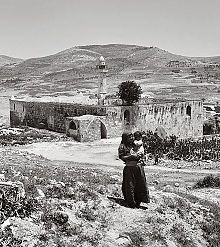
Yaḥya and his relation to John the Baptist.
John the Baptist made a deep impression during his life. The four canonical Gospels mention him. Flavius Josephus describes him as a good and influential man, and as a potentially undermining factor in the eyes of the local rulers. John appears in the beginning of the 7th century in the Qur’ān under the name Yahya . How did the Qur’ān come to know John the Baptist? In all its seeming simplicity this is the research question of this project.
This study intends to analyze the existing Late Antique material on John the Baptist in order to determine which sources informed the Qur’ān about the figure Yahya . This effort will help to assess the milieu in which the pericopes about Yahya originated and who were among the audience that the Qur’ān was relating to. In order to gain insight into the aspects of the figure John/Yahya that the Qur’ān expected its auditors to be familiar with, this research will build upon the existing studies on John in his Judean milieu that analyze his role in the early Christian tradition, followed by an overview of the sources from the first century to the beginning of the seventh century for traces of John the Baptist in the geographic regions with connections to the Arabian Peninsula in Late Antiquity.
The Authority of the Fourth Gospel
Just prior to his retirement and subsequent passing in 2013, Maarten Menken, then Professor of New Testament at the Tilburg School of Catholic Theology in the Netherlands, published an article entitled "What Authority Does the Fourth Evangelist Claim for His Book?" The article represents Menken's attempt to identify the claims to authority present in the Fourth Gospel, to identify the claims to authority that are made by the Fourth Evangelist on behalf of his composition and the strategies he employs throughout his composition in order to establish these claims. The present study is an attempt to improve on Menken's contribution to Johannine scholarship, first, by restating his foundational question and, then, by redressing that question with increased methodological precision as well as greater sensitivity to both its relationship to and implications for current research concerns within the field.
The study describes the results of an examination of the authority that is claimed within the Fourth Gospel and of how this authority ought to be understood within the literary environment of early Christianity. The study examines:
-
The scope of the authority exercised throughout the Fourth Gospel
-
The claim to authority that is made in the Fourth Gospel
-
The nature of this authority within the context of the gospel as a whole
-
The strategies employed throughout the Fourth Gospel which are used to establish this authority
-
How the authority claimed within the Fourth Gospel compares to the authority that is claimed in other early Christian gospels, Jewish writings, and Greco-Roman literature.
The Gospel of Thomas within the Syriac milieu of the Christian Church from Edessa
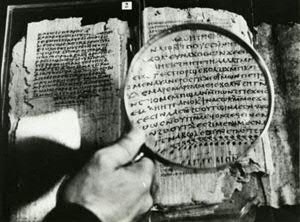
The project justifies itself on the one hand by the lack of consensus among the interpretations suggested for the Gospel of Thomas in the last decades and on the other hand by the continuous necessity to refocus and adjust the research of the so-called “Thomasine tradition” relying on intertextual rather than on textual issues. In this respect, the project consists of two major parts.
In the first part I would like to undertake a critical review and comparative analysis of the studies devoted to the Gospel of Thomas, including its discovery, its character and its relation to other literary corpora of Late Antiquity: neo-testamentary, patristic, monastic, hermetic and, of course, manichean literature.
The second part of my project, and the most important one, is exclusively dedicated to the relation between the Gospel of Thomas and the Thomasine tradition. Starting point in this approach is the ancient evidence we have at our disposal in Syriac. This part encompasses five sections. First, I believe necessary to analyze the significance the city of Edessa for the birth and development of the Eastern Christianity. Within this purpose it is necessary to pinpoint and to scrutinize the traits of early Syriac Christianity as an extremely sophisticated entity where the Gospel of Thomas could have possibly been created.
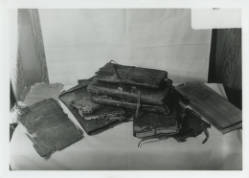
The second section includes and updated overview of Syriac asceticism. I intend to examine in detail the distinguishing features of the Syriac asceticism and raise the question why scholars explain it by recurrently resorting to its double origin, nl. Palestinian and Alexandrinian. This context of ideas is the suitable environment for the analysis of fundamental concepts such as “itinerary preachers,” “monachos,” in addition to those of “celibacy” and the origin of the Christian asceticism within the proposed research project.
The third section puts together the details needed for a comparative analysis of the twin model such as one encounters it in the literature of Late Antiquity – I must add that I will have to underline the “twin model” especially such as it is represented as a divine being and an itinerant missionary – a study approach that also applies to the studies on Manichaeism.
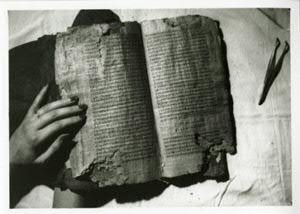
Sections four and five deal extensively with the Thomasine tradition and the central character that the apostle Thomas embodied. The research focuses on the “Thomasine tradition” as expression of a regional type needed for the expansion of Christianity in its first centuries. The emphasis will lay here on the connections between the Gospel of Thomas, the Book of Thomas and the Acts of Thomas and the possible scenarios we can conclude from them, evaluating the different trajectories that emerge from these texts: on the one hand from the Gospel of Thomas towards the Acts of Thomas, on the other hand from the Gospel of Thomas passing through the Acts of Thomas towards the Book of Thomas (hypothesis of Prof. Paul-Hubert Poirier). “The Thomas character” studied from the viewpoint of the Edessian tradition will be linked to the interpretative model of “the perfect disciple” and I am going to undertake the analysis from this viewpoint.
Last but not least I will study the hypotheses regarding the textual transmission of the so-called Thomasine tradition: how did the transfer of knowledge/ ideas from a cultural circle to another, namely from the Syriac/ Greek one to the Coptic one, actually take place? In other words, this research project aims at investigating the ways in which the transfer of ideas from Syria to Egypt was possible.
Supervisor: Lautaro Roig Lanzillotta
The City and the Naturalists – Impiety Accusations in Ancient World
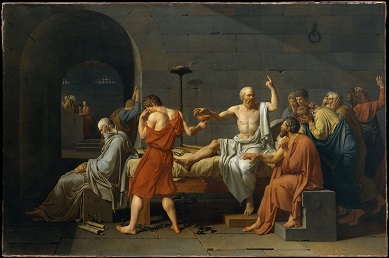
“How to approach the ancient “science” in a non-anachronistic way?” This may be the biggest challenge of antiquity scholars and is still right for historians of science who want to look back to the pre-modern history of science in a more honest way, using concepts less related to our 19th and 20th century way of seeing nature.
In order to investigate the motivations and risks of studying the sky, the human body and the movement in antiquity this project investigates the idea of impiety ( ἀσέβεια ), paying particular attention to the naturalist impiety while studying, mainly, celestial phenomena, but also other mysterious phenomena of nature (φύσις).
The trial of Socrates is the most famous process based on an impiety accusation and although the Socratic tradition does not consider Socrates as a Naturalist, what we know about his defense shows a Socrates dedicating a considerable part of his defense to show that he did not had interest in natural studies and prefered to dedicate his time to more practical subjects. The evidence of the Diopeithes’ decree, who criminalized teachings regarding celestial (μεταρσίων) theories shows that this may not have been an isolated case of persecution of naturalists, as if impiety crimes were a first version of heresy accusations that natural philosophers would latter face. According to Plutarch, "[Diopeithes] brought in a bill providing for the public impeachment (εἰσαγγέλλεσθαι) of those who did not recognize the gods, or who taught doctrines regarding the heavens (λόγους περὶ τῶν μεταρσίων)” (Plutarch, Pericles, c.32 s.2 apud Whitmarch (2015): Battling the gods)
Plato’s Apology of Socrates exemplifies how naturalistic concepts surround the juridical, social and political problems related to impiety crimes. The accusation of not recognizing the gods of the city are put in parallel with the idea of investigating the two sacred and mysterious realms of the cosmos - the heavens and the depth (τά τε ὑπὸ γῆς καὶ οὐράνια, Ap. 24b). The study of celestial beings such as the moon (σελήνην) and the sun (ἥλιον) were related with the accusation of introducing new gods in the city (Pl. Ap. 14c-d). The impiety crime is showed, not longer as an absence of some ritual or customary ( νόμοι ) acts, but as lack of conviction, faith or religiously-not-official intellectual work.
This serves as evidence for the rationalization of the “perception” of “nature” and may be just one evidence of a more big shift in naturalistic thinking, related to a more rational conception both of “Nature” and “Human” and showing the first debates surrounding the interaction between them. This research is framed in the big aim of clarifying these concepts and the relationship between them.
Supervisors: Prof. dr. Lautaro Roig Lanzillotta and Prof. dr. Delfim Leão

In terms of a reception-historical perspective on the appropriation and use of Scripture in Matthew, the dissertation seeks to address the two-part question: What exactly is the function of the implicit and explicit citations and allusions within their contexts, and what are the specific ways in which Matthew’s intertextual use of Scripture can be seen to expose his orientation towards the authority of Scripture? Through the application of a literary intertextual methodology, the study seeks to shed light on how different citations and allusions from Scripture in Matthew’s gospel reveal his perception of and orientation to the possible oracular, literary and/or normative authority of Scripture, in those specific instances, and broadly.
The Making of Identity: A Culture of Translation in Ptolemaic Egypt
This study proposes to examine Greek translations of Jewish religious texts, translational activity, and community reception of such texts from the 3rd century BCE through the beginning of the 1st century CE. The key focus of the project will not only be the translations themselves (the Septuagint) but other compositions which pertain to translational activity such as the Letter of Aristeas, the Greek translation of Sirach and its prologue, Josephus, and Philo. Throughout the project, recent understandings and advancements in translation theory will be kept in critical view as an aid to better understand Jewish translational activity as it relates to (1) interpretative issues and complexities; (2) socio-historical factors and influences; (3) the ideological and theological impact of translational and redactional choices, especially those texts that were understood occupy an elevated or authoritative status, and (4) the impact of the translations on the self-identity of the Jewish community who produced and used these translations.
Meals Between Jews and non-Jews in the Late Hellenistic and Early Roman Era.
There is a considerable amount of evidence from antiquity that testifies to Jewish practice avoiding meals with non-Jewish neighbors. Jews were known not only for avoiding biblically-forbidden food items but also shunning meals prepared by the non-Jews, and even choosing not to share food at common table and in the company of non-Jews.
Greco-Roman writers noted that Jews deliberately refuse to share the table with those of other nations; (Philostratus, Life of Apollonius 5.33 LCL) They hate other nations, do not mix with them, never eat with them and generally wish them ill (Diodorus Siculus, Book 34, frag 1-2). The author of Jubilees intentionally instructs Jews not to eat with non-Jews and not to associate with them in general (Jub. 22:1).
In Tobit, the hero insists that he did not eat “gentile food” in his captivity (Tob. 1:10-11). In Flavius Josephus, some Jews went as far as to object to the use of ‘Gentile olive oil’ (War 2. 591-92, Life 13-14). In one instance, the members of Jewish community were even supposed to be compensated by the local authorities because of such practice (Ant. 12. 119-20)
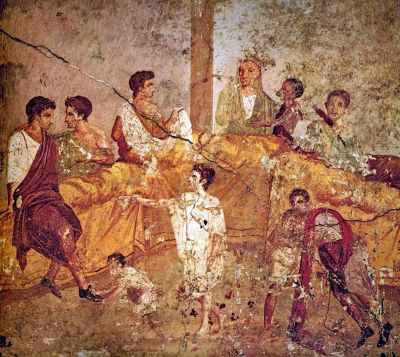
But how strict and universal was Jewish avoidance of sharing meals with non-Jews in that period? What was the state (nature) of sharing meals (commensality) between Jews and non-Jews in the late Hellenistic and Early Roman periods? The aim of my research is to examine any evidence of such meal interactions diachronically, empirically and comparatively in order to gain a more accurate understanding of human social behavior within the given era.
The is no dispute that Jewish abstinence from meals with non-Jews in antiquity was a widespread practice. My research does not focus on avoidance, but rather on the rare evidence of the opposite. There is a number of ancient sources, which suggest that in some cases, and in certain circumstances some Jews made decisions to share meals with non-Jews.
In Judith 12 the heroine eats with a pagan general before she kills him. Joseph eats with Aseneth and her whole family when she renounces idolatry (Jos. Asen. 7). In Acts 10:-11:18 Gal 2:11-14 Jews and Gentiles also eat meals together. Jewish translators dine with king Ptolemy in the Letter of Aristeas 181-185 and in Antiquities 12:94-98 as well. Scenarios like these are rare in literature, but never the less, they deserve an explanation.
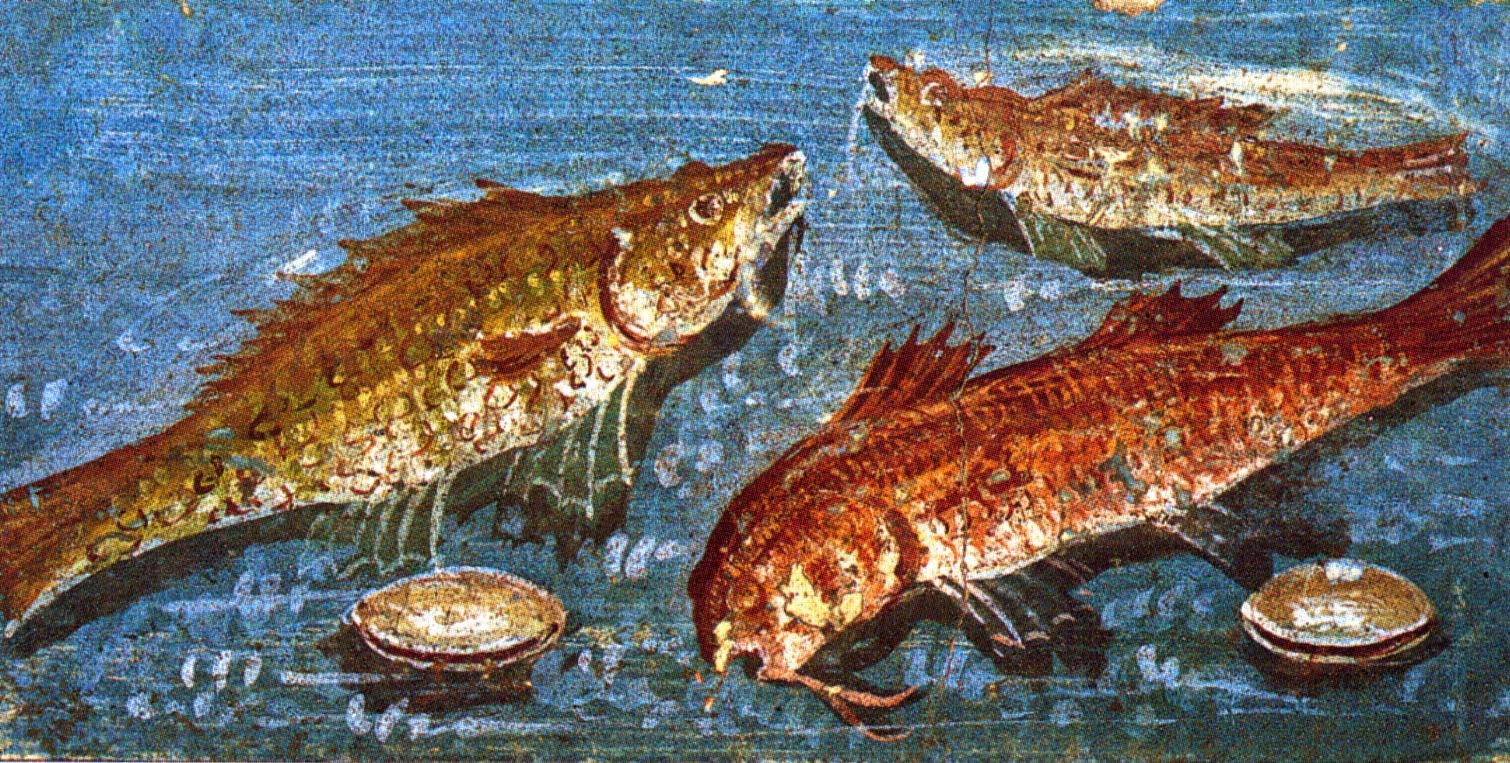
Perhaps it is not entirely accurate to state that Jews never ate with non-Jews. The abstinence from meals with outsiders could not have been absolute, it could not have been always consistent and a completely universal behavior for all Jews of that era. Though generally expected and normal, the Jewish praxis of separation from non-Jews at meals depended on the exact circumstances and also on the individuals involved in the given scenario.
The rare literary occurrences of even limited table interaction between Jews and non-Jews are a reflection of certain historical reality. It testifies to the flexibility of human culturally-driven behavior. All of such reports cannot be fictional, or merely imagined. There are too many instances to dismiss them all. Some Jews indeed did eat with non-Jews, perhaps in rare situations, but they did. Those who intentionally crossed the line had their reasons and these reasons were substantive enough to put aside the usual avoidance and make an exception.
The reports of intercultural table interaction between Jews and non-Jews of the late Hellenistic and early Roman period, as scarce as they may have been, need to be considered in natural context. Examining such interpretations could help with reconstructing a fuller and more realistic picture of Jewish-Gentile social engagement in that era.
If you want to view previous PhD research, visit our archive.
| Last modified: | 08 April 2024 12.09 p.m. |
